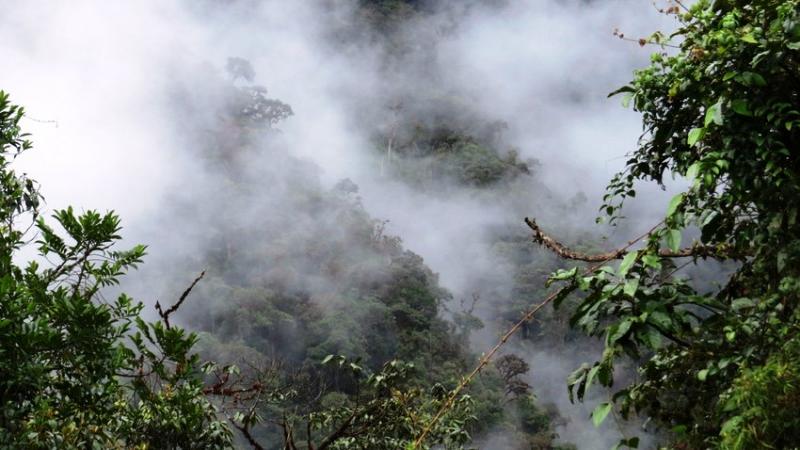“Tree Rain”
Have you ever heard of “tree rain?” Is it a real thing?
Tree rain is something that happens in dense forests high in the mountains. In forest areas next to oceans, tree rain results from heavy water droplets that gathers on leaves and leaf bottoms. Misty, foggy weather, like in Northwestern Washington State, help water droplets to form. When it is heavy enough to fall, the wind shakes the tree and makes the water droplets fall – a short rainfall!
However, high in rainforests, like in the Andes Mountains in South America, tree rain acts a little differently. Low, heavy rain clouds trapped by the high mountain peaks hang near the tall tree canopies, and supply moisture to trees, mosses, and ferns directly from the air-borne water. Evaporation is the process of liquid water turning to a gas, or vapor, when temperatures rise. In these high parts of the rainforests known as “cloud forests”, sunlight is greatly filtered by fog and mists, reducing the amount of evaporation that can occur. As a result, most of the water supplied to trees and other plants falls to the ground (fog drip) from the droplets on the canopy leaves.
But what happens when rain clouds aren’t around? How do the trees get enough water? The answer is surprising. Before the rainy season, when the trees start to need water, they can cause water vapor to form in the air by transpiring, or releasing water from their leaves! This water falls to the ground, waters the trees and other plants. But the real trick is that this falling water raises the air temperature. The increased air temperature is enough to change wind patterns that bring rain clouds to the cloud forests. So the trees can trigger the start of the rainy season!
Scientists are just beginning to understand the workings of cloud forests, and the wonderful habitats, unique animals and plants that exist there. Save the rainforests!


